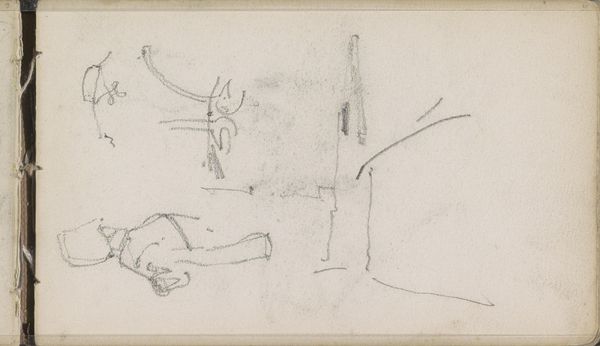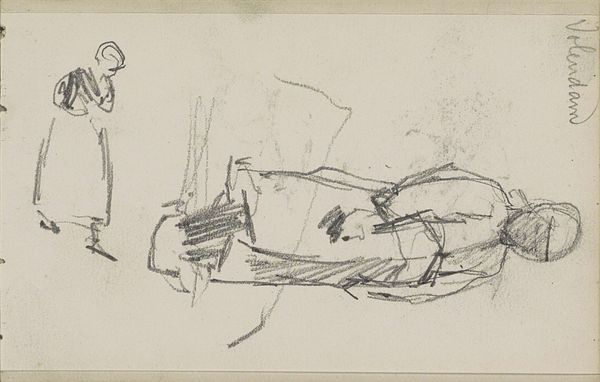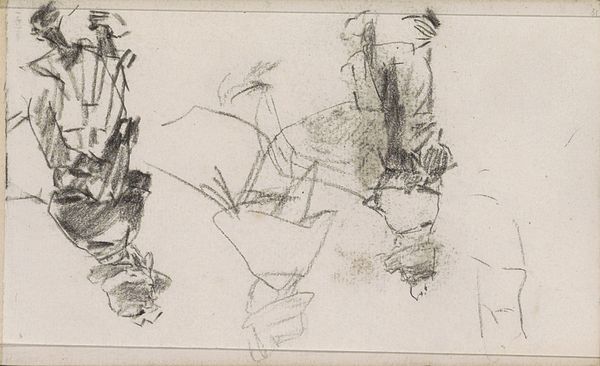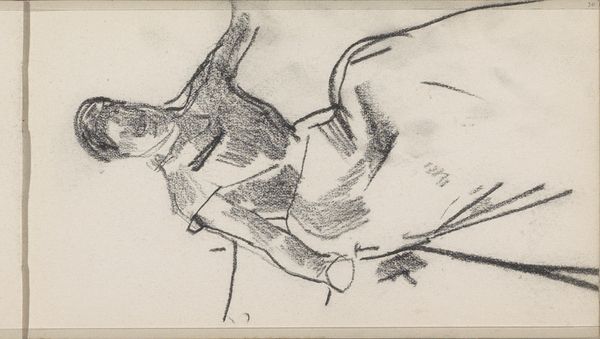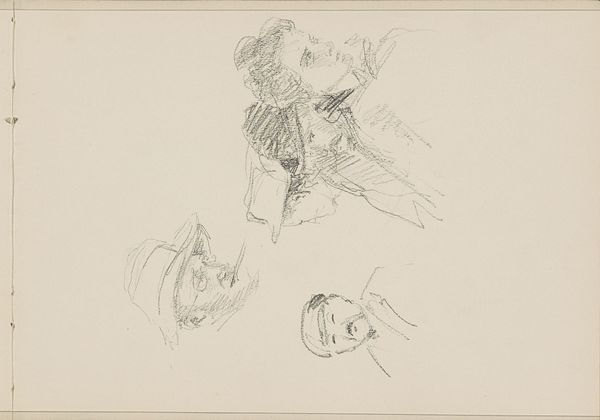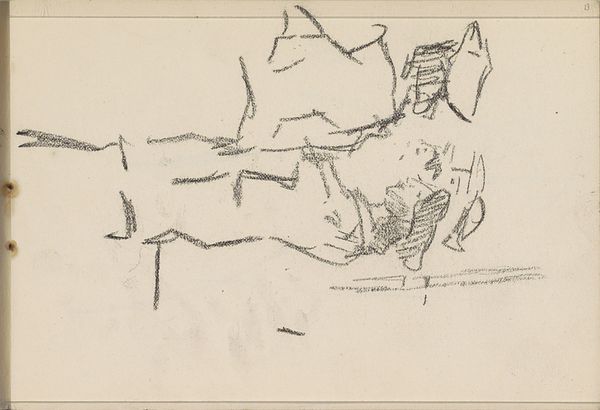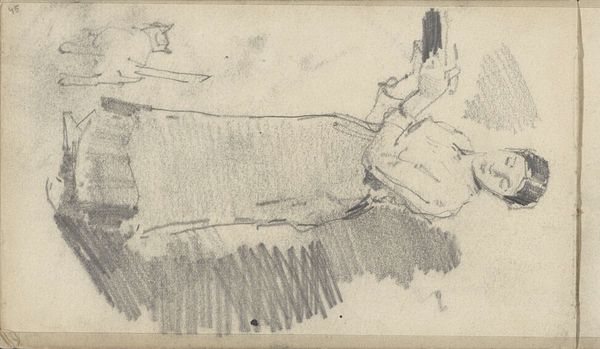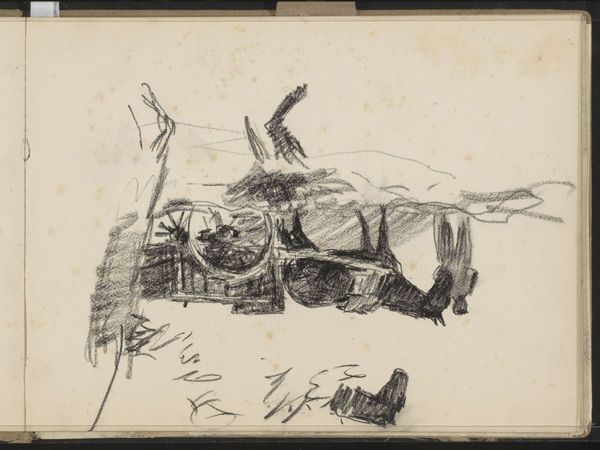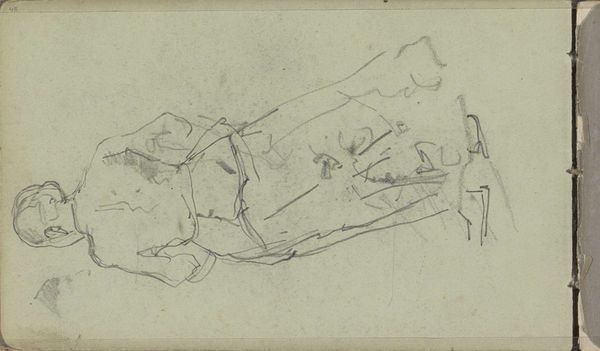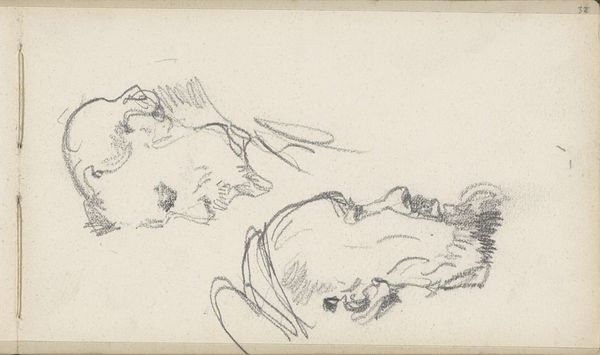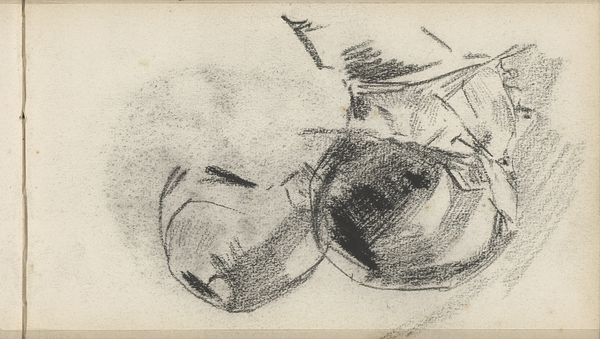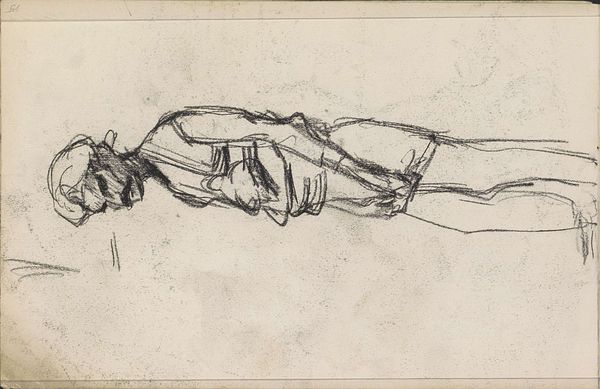
drawing, pencil
#
portrait
#
drawing
#
toned paper
#
light pencil work
#
impressionism
#
pen sketch
#
pencil sketch
#
personal sketchbook
#
ink drawing experimentation
#
pen-ink sketch
#
pencil
#
sketchbook drawing
#
storyboard and sketchbook work
#
sketchbook art
#
realism
Copyright: Rijks Museum: Open Domain
Editor: This drawing, "Standing Woman, Seen from the Back," made by George Hendrik Breitner between 1881 and 1883, is deceptively simple, created with just pencil on toned paper. The rapid strokes convey movement and a fleeting moment. How does the materiality of this sketch, its seeming impermanence, inform our understanding of Breitner's artistic process, Curator? Curator: The quick, almost ephemeral nature of the medium is key. Pencil drawings like these weren't necessarily intended as finished "art" in the traditional sense, but rather as a record of observation, an exploration of form. Consider the accessibility of pencil and paper during this period. It was a relatively inexpensive material, readily available to artists, facilitating the documentation of everyday life and the working class in a very direct manner. How does that accessibility influence who gets represented, and whose stories get told? Editor: So, the very accessibility of the medium democratizes the subject matter to some extent? Instead of grand historical paintings requiring expensive materials, Breitner captures an everyday woman using humble tools. It suggests a different kind of patronage, or perhaps a lack thereof, compared to commissioned portraits. Curator: Exactly! Think about the labor involved. It is rapid, gestural, likely created on-site amidst the hustle and bustle of Amsterdam. What does this immediacy, born from both material and process, tell us about Breitner's engagement with modern life, and his desire to capture its transient qualities? Editor: It feels almost journalistic, like sketching notes for a larger commentary on society rather than aiming for idealized beauty. He is choosing to represent her labor through his labor of quick and accessible drawing, as opposed to commissioning an expensive portrait to symbolize status. Curator: Precisely. This shifts the focus from the idealised form to the representation of working individuals and how their forms, or indeed working-class forms, were made accessible through artmaking to larger audiences at the time, who may or may not engage in similar or shared forms of labour. What did we discover looking at it through that lens? Editor: I see the artwork less as a singular masterpiece and more as a product and record of artistic labour intertwined with social observation. Thank you.
Comments
No comments
Be the first to comment and join the conversation on the ultimate creative platform.
